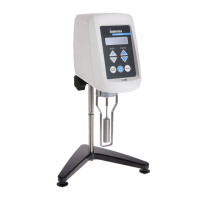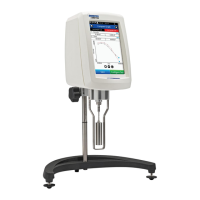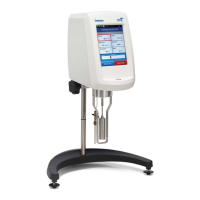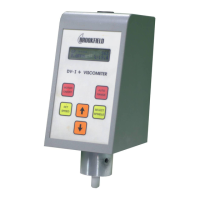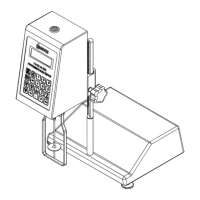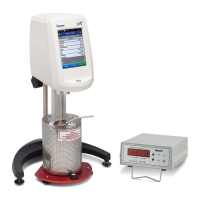Brookeld Engineering Laboratories, Inc. Page 40 Manual No. M14-023
Appendix C - Variables in Viscosity Measurement
As with any instrument measurement, there are variables that can aect a viscometer measurement.
ese variables may be related to the instrument (viscometer), or the test uid. Variables related to the
test uid deal with the rheological properties of the uid, while instrument variables would include the
viscometer design and the spindle geometry system utilized.
Rheological Properties
Fluids have dierent rheological characteristics that can be described by viscometer measurements. We
can then work with these uids to suit the lab or process conditions.
ere are two categories of uids:
- ese uids have the same viscosity at dierent Shear Rates (dierent RPM’s)
and are called Newtonian over the Shear Rate range they are measured.
- ese uids have dierent viscosities at dierent shear rates (dierent
RPM’s). ey fall into two groups:
1) Time Independent
2) Time Dependent
Time Independent means that the viscosity behavior does not change as a function of time when
measuring at a specic shear rate.
- A pseudoplastic material displays a decrease in viscosity with an increase
in shear rate, and is also known as “shear thinning”. If you take viscometer
readings from a low to a high RPM and then back to the low RPM, and
the readings fall upon themselves, the material is time independent,
pseudoplastic and shear thinning.
Time Dependent means that the viscosity behavior changes as a function of time when measuring
at a specic shear rate.
- A thixotropic material has decreasing viscosity under constant shear rate.
If you set a viscometer at a constant speed recording viscosity values over
time and nd that the viscosity values decrease with time, the material is
thixotropic.
Brookeld publication, “More Solutions to Sticky Problems”, includes a more detailed discussion of
rheological properties and non-Newtonian behavior.
Newtonian
Non-Newtonian
Pseudoplastic
ixotropic

